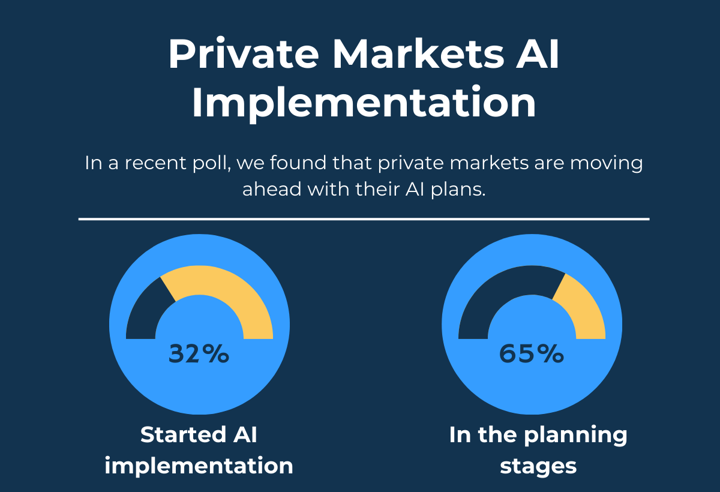AI Implementation Best Practices & Considerations
In our recent webcast with ACA Group, “Navigating AI Implementation Compliance Considerations for Private Markets,” we surveyed 190 attendees about their AI strategy. We found that 32% have begun their AI implementation, while 65% are in the planning stages. To assist firms in preparing and validating their current strategy and implementation plan, the team at BlueFlame AI has compiled a list of Best Practices, Key Considerations, and Implementation Resources.

Best Practices
- Decide on Integrations: AI will provide the best and most useful experience when it has access to the data and systems you care about. Consider unstructured data (file systems), market data and company demographics data, as well as your books of records (e.g. CRM).
- Buy vs Build Decision: Do you have resources to build? Focus any build on areas where there is core IP and business differentiation focus for the firm.
- Build / Leverage a Cross-Firm AI Committee: Except for the largest firms, you don’t want AI sprawl via a multitude of systems. Create a committee with ownership and objectives to establish firmwide strategy and to coordinate.
- Decide on an Internal Champion: Pick someone passionate. We often see the best implementations when someone can “make their career” on implementation internally with high ROI use cases.
- Inventory the Use-Case Ideas: Identify all the use cases internally and prioritize/rank them on value/time-savings vs. feasibility today vs. down the line. Include things not possible today keeping in mind GPT-5 (6, 7, 8) will open doors.
- Figure out the Support Model: Who is training staff with prompt engineering? Who is handling LLM issues? Who is testing new models and guiding on which model to use when?
Key Considerations
- Security and Permissions: With the variety of connected sources, maintaining permission boundaries is paramount. Make sure you consider how permissions are managed.
- Connecting to Data Sources and Understanding External Costs: Many third-party providers have additional costs associated with data access. Identify and decide on those costs.
- Auditing and Archival (SEC Compliant Archive): Both information security and compliance need an audit trail for surveillance and validation. The audit trail will allow for identification of misuse and allow for implementation of a monitoring and testing program to support regulatory compliance.
- Regulatory AI-Washing Concerns: Be thoughtful about how you advertise the use of AI in your marketing documents, being careful not to overstate AI use.
- LLM Security and Training Data: Ensure provisions are in place to prevent use of your data in model training, and that the chain of providers holding your data uphold strict security standards that are validated through practices such as SOC2 audits.
- Understand Your AI Roadmap: AI is evolving fast. Make sure you are working with a partner and provider that can help you keep up with it.
AI Strategy and Implementation Resources
Don’t miss these resources we’ve created to help your firm move from planning your AI journey to strategically implementing AI across your firm.
- AI Selection & Implementation Checklist
- So, You Want to Embrace AI Across Your Firm? Let’s Define Your AI Use Cases.
- AI Use Case Template
- Navigating AI Implementation: Compliance Considerations for Private Funds (Webcast)
- Buy vs. Build: How to make informed decisions as you invest in AI (Finextra)
Demo BlueFlame AI and See Best Practices in Action
At BlueFlame AI, we are committed to being the trusted partner on your AI journey, and we look forward to helping you harness the power of this transformative technology to achieve your goals. To learn more about our AI, schedule a demo today.
.png)